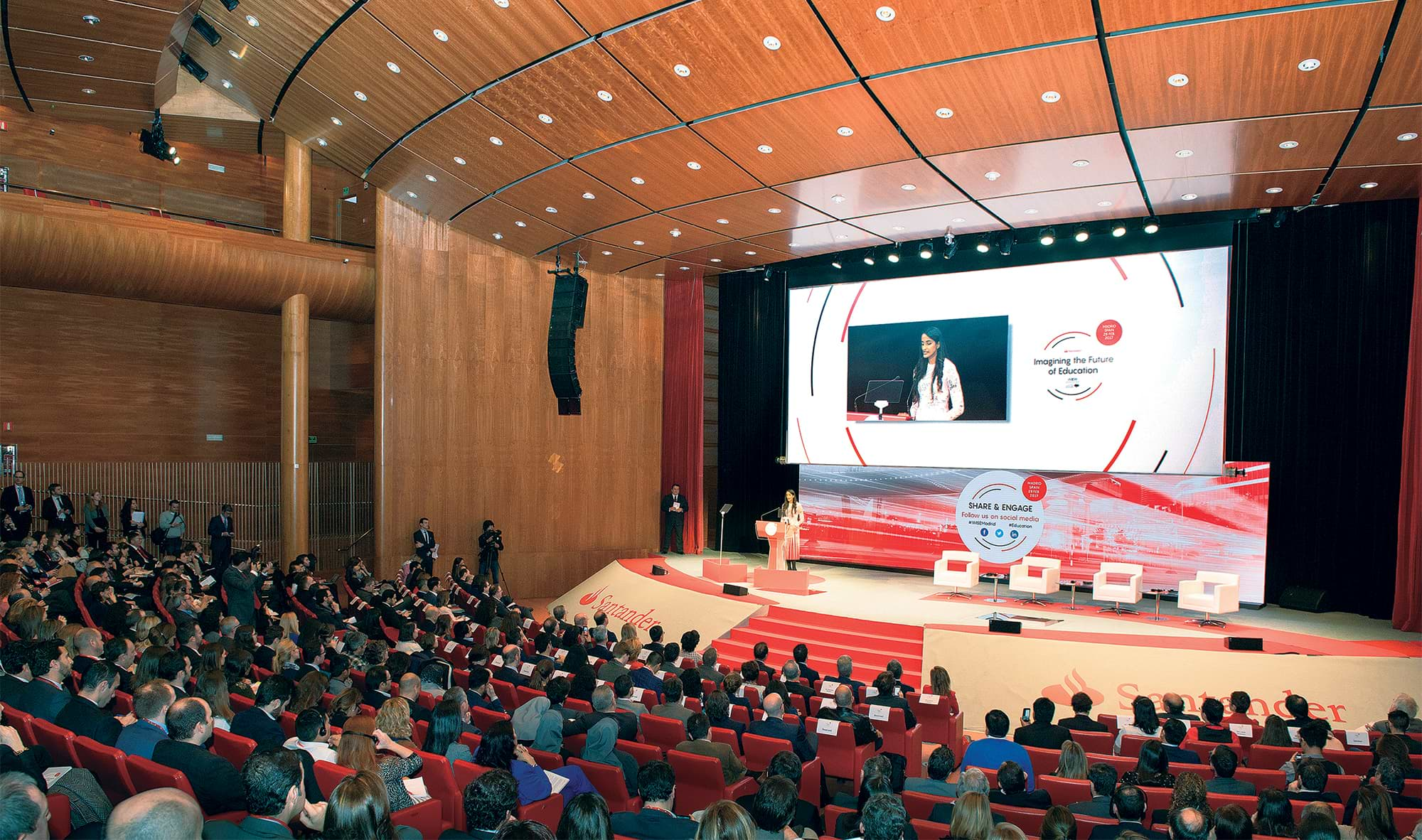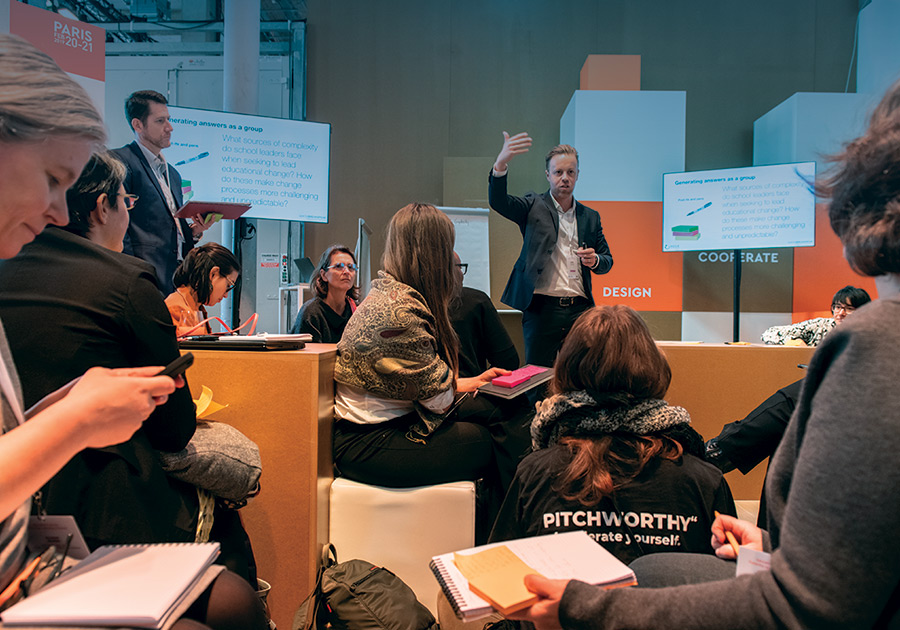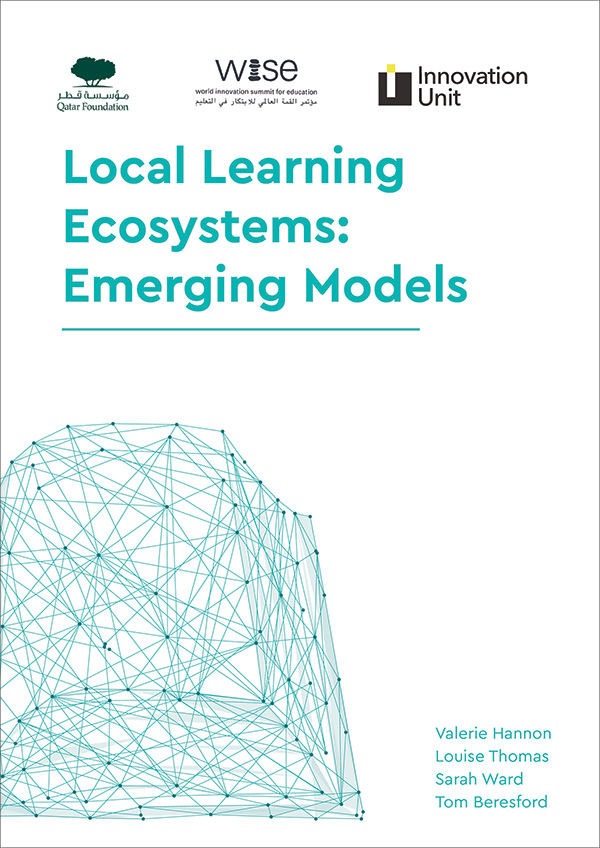future of education
feature

The World Innovation Summit for Education (WISE) is reimagining the future of education in a changing world. A global initiative that brings together decision makers, teachers, and educational experts in an effort to tackle the world’s evolving educational challenges, WISE sees advancements in education as key for addressing global issues including poverty, skills gaps, inequality, and conflict.
The ecosystem approach is just one such advancement that WISE sees as crucial to the future of education. After all, WISE itself is located within a learning ecosystem—Education City, an institution in Qatar that links a research university, start-up incubators, and cultural institutions. In their 2019 report produced in partnership with the Innovation Unit in the UK, “Local Learning Ecosystems: Emerging Models,” report authors explore the ways in which educational ecosystems can be used to pick up the slack where traditional modes of schooling fall short. Educational ecosystems expand beyond traditional schooling, harnessing a range of community resources, a diverse mix of social interactions, and a broad collection of technological tools to provide students with a holistic educational experience.
Though the authors identify three types of educational ecosystems (knowledge-sharing, innovation, and learning), it chooses to focus on learning ecosystems in this report.
Learning ecosystems are defined as “open and evolving communities of diverse providers that cater to the variety of learner needs in a given context or area.” The authors decided to focus on learning ecosystems already in existence as the networks best suited towards providing immediate educational opportunities for current students.
Why Ecosystems?
Educational ecosystems provide learners with a holistic education they re unlikely to receive through traditional schooling, by connecting learners to community resources and diverse educational experiences. This greater level of community connection provides learners with an education that reaches beyond the classroom and towards the collective action necessary to tackle current world problems.
In their report, the authors explore nine different learning ecosystems in six different countries. From Finnish schools that use local museums as part of their curriculum to an American system that provides students with comprehensive career training, learning ecosystems clearly present several key takeaways for the future of education.
Accreditation Beyond Standardized Tests
Learning ecosystems find creative ways to keep both teachers and students engaged, deviating from the stress and burnout associated with standardized assessment. Additionally, through these non-traditional modes of assessment, learning ecosystems can better evaluate the degree to which students have learned skills that are necessary for their future. At the Metropolitan Regional Career and Technical Center in Rhode Island, United States, instead of taking tests to exhibit concept mastery, students perform “exhibitions of achievement” once every grading period. Students studying at “The Met” perform these exhibitions to showcase the progress they’ve made through their individualized educational plans.
Other learning ecosystems have creative digital modes of measuring student success. In the LRNG program, which operates online in 16 U.S. cities, students are awarded with “badges” they receive for completing “playlists” created by participating businesses and organizations. Each playlist provides students with the opportunity to learn skills relevant to college and the workplace, such as conflict resolution. Within the LRNG system, badges help verify student mastery of tangible skills while avoiding traditional modes of assessment.
The education systems of the future need to go far beyond preparing students for higher education, especially if they are to prepare students for the challenges of a changing world. Learning ecosystems tackle global challenges by providing students with education that goes beyond university preparation. Curriculum within learning ecosystems can tackle anything from interpersonal relationships to comprehensive career preparation. Instead of presenting college education as the only career path, within the JumpStart program in Louisiana, United States, students complete relevant career training in sites outside of their traditional secondary school classrooms. And in Kuopio, Finland, schools use a system known as Cultural Paths to expose children to a different topic in arts, music, or culture each year. The program not only exposes students to the arts, but has expanded to educate students on the importance of caring for the environment and to explain the mechanisms of healthy friendships.
A Need for Community Support
Community support is a must-have for learning ecosystems looking to thrive. Every single one of the nine learning ecosystems analyzed in the report relied heavily on community support to make their learning objectives a reality. “The Met” school in Rhode Island, for example, requires extensive community support to provide students with city internships as part of their individualized educational plans, whether the internships be at city hall or a local skateboard shop.

Teamwork Between Public and Private Sectors
Since learning ecosystems can provide learners with a broad array of educational experiences ranging from museum visits to digital curriculum, governments currently implementing ecosystemic education face heavy funding needs. At LenPolyGrafMash (LPM), a developing ecosystem in St. Petersburg, Russia, a mixture of private, municipal, and university funding provides educational opportunities for students interested in STEM and entrepreneurship. Mixed funding has been especially useful to LPM, since securing funding from a federal government that favors more traditional projects has been difficult. And at “The Met” in Rhode Island, public-private partnerships have allowed the institution to sustain lasting relationships in the community that have provided learners with internships and other real-world experiences.
 Fewer young people today experience the empowerment of education through conventional schooling alone. But when they engage with a range of resources within a broader community, charged with the power of social interaction in the connected world, learners of all ages, temperaments, and aptitudes can seize greater opportunities that better meet their needs. As learners around the globe seek both the technical skills of doing and knowing, and the soft skills of management, critical thinking, and many others, the holistic approach suggested by ecosystems challenges conventional education hierarchies and decision making.
Fewer young people today experience the empowerment of education through conventional schooling alone. But when they engage with a range of resources within a broader community, charged with the power of social interaction in the connected world, learners of all ages, temperaments, and aptitudes can seize greater opportunities that better meet their needs. As learners around the globe seek both the technical skills of doing and knowing, and the soft skills of management, critical thinking, and many others, the holistic approach suggested by ecosystems challenges conventional education hierarchies and decision making.
In this report, colleagues from Innovation Unit have provided a valuable framing of ecosystem typologies and stages, with a review of the most salient current thinking. The core of the report features nine case study portraits that dramatize a variety of ways education ecosystems are having real impact. The authors pose key questions of each of the initiatives, seeking to identify both blockages and enablers to creating education ecosystems, as well as, most crucially, asking whether and how they might truly represent new learning paradigms, as suggested by some advocates.
Many of the learning ecosystems featured in the report have designed their programming initiatives to target traditionally underserved populations. In Catalonia, Spain, the inspiration to enact the Educacion360 program, a learning ecosystem that offers children “full time learning” through a digital badge accreditation system and community activities, comes from a desire to remedy the inequality between families hoping to enroll their students in extracurricular activities. And within the Remake Learning in Pittsburgh, United States, a learning ecosystem that relies on community partnerships with museums, parks, and other community centers to enhance children’s educational experiences, programming is deliberately designed to assist marginalized students. Educational accessibility is even within the curriculum presented to learners, in hopes that they will tread into the future carrying a comprehensive understanding of social inequality. For example, one of the program’s learning objectives focuses on teaching students to “dissect social systems” and “deconstruct inequalities.”
The Future of Education
Technology has changed the world as we knew it faster than we could have imagined. Education in the twenty-first century, too, must change, if it hopes to keep pace with technological change. And while it would be short-sighted to suggest that education alone is the key to tackling complex global issues such as poverty, conflict, and climate change, better education is necessary to meeting today’s multi-faceted international challenges. The report author’s suggestions for learning ecosystems may create rich educational opportunities that students will need in order to thrive in an uncertain future. Time will tell whether this biological metaphor is the best mode for constructing the education of future learners.
ALLYSON BERRI is a DC Correspondent for Diplomatic Courier magazine.

